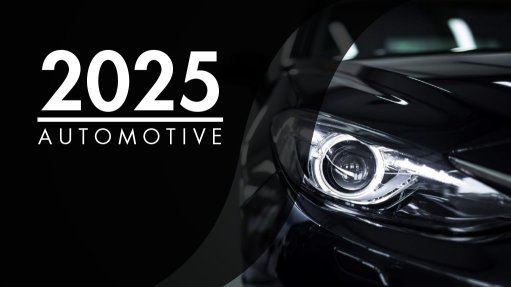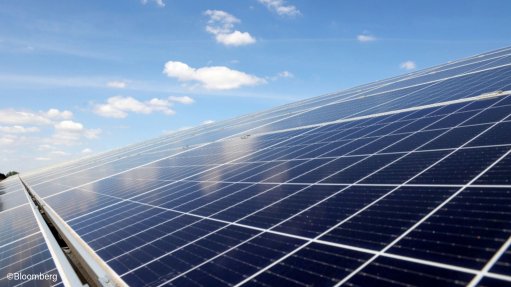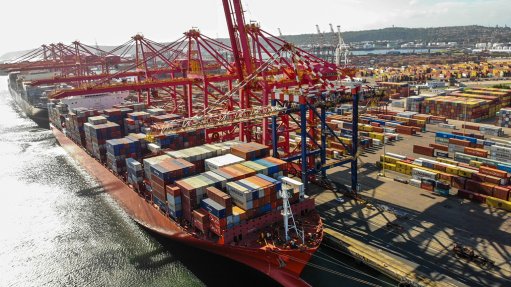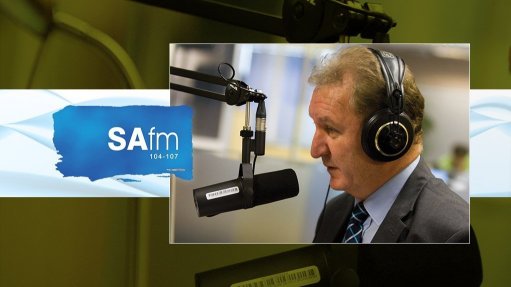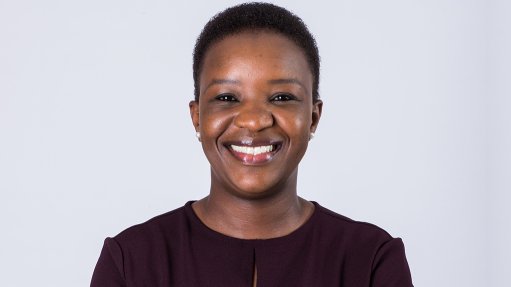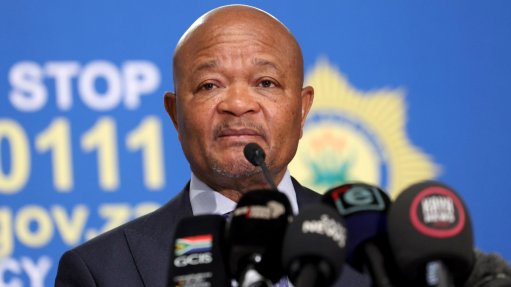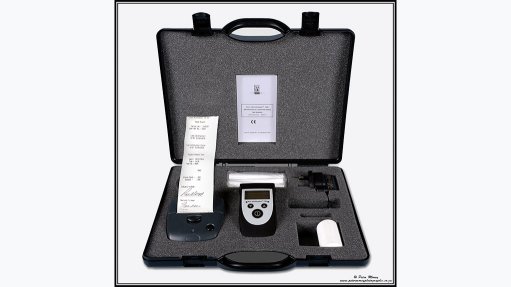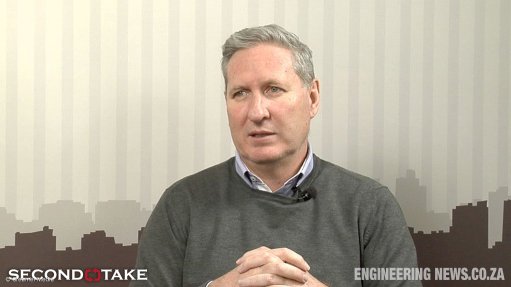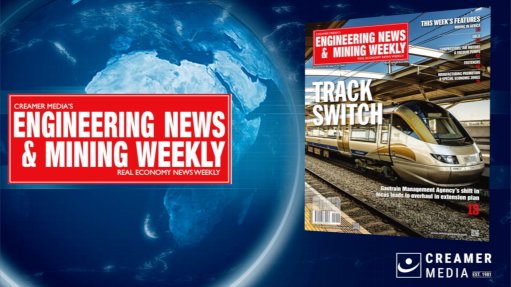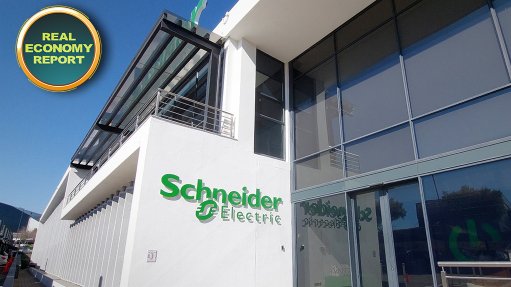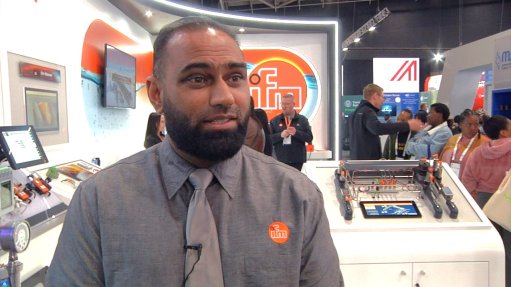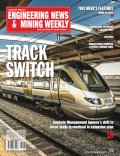Corridors of Opportunity: Europe and Africa Pave the Way Together
This article has been supplied and will be available for a limited time only on this website.
Transport corridors are among the most powerful engines for economic transformation. In Europe, every euro invested in the continent’s Trans-European Transport Network has been estimated to return four euros in GDP. The same – or even greater - potential exists in Africa – if investments are focused and coordinated.
That’s according to Paul Riembault of the Directorate-General for International Partnerships (DG INTPA) at the European Commission. Speaking at the 43rd Southern African Transport Conference (SATC) on 10 July, Riembault explored how Africa could leverage the European Union’s long and complex corridor development experience.
He encouraged African institutions, planners and financiers to continue their coordinated approach to corridor development – and to consider Europe’s successes as well as challenges in transforming fragmented infrastructure into the backbone of a thriving single market.
“Transport corridors are not just about roads and rails,” Riembault told delegates. “They’re about unlocking integration, intra-african trade, and regional prosperity.”
From fragmentation to connectivity
Riembault outlined Europe’s difficult past – a continent once divided by war, incompatible rail gauges, and isolated national railway systems. “Europe’s map was built to divide, not connect,” he noted. But from the wreckage of conflict came the political will to unite, and with that will came the need for infrastructure that reflected integration.
Corridors in Europe, he explained, were not the starting point but the outcome of political alignment. The EU’s single market project created the demand for connectivity, and the Trans-European Transport Network (TEN-T) emerged to meet that demand.
A criteria-based approach to planning
What sets Europe’s TEN-T model apart is its data-driven, criteria-based approach. Corridors are not selected arbitrarily or through purely political negotiation. Instead, they are based on criteria or even hard data: e.g. ports handling more than 33 million tonnes of freight annually – corresponding to 1% of total EU freight -, cities with over one million inhabitants, capital cities and strategic industrial zones. These “core nodes” anchor each multimodal corridor.
“In a Union of 27 Member States, it’s natural that national interests may diverge “ ” Riembault said. “— Hence a strong common framework serves as protection against shifting political priorities and pet projects ”
Currently, TEN-T consists of nine multimodal corridors, supported by harmonised regulations in road safety, rail electrification, axle loads, rail signalling systems, and even ticketing interoperability. Infrastructure is just one layer – governance, standardisation and financing form the others.
“Without harmonisation, corridors become patchworks. We learned that the hard way in Europe. Interoperability should be started from day one.”
Global Gateway: Investment approach in Africa
Riembault’s presentation also highlighted how the EU is applying the approach of concentrating investment through the Global Gateway initiative – the EU’s global investment strategy, which prioritises energy, digital and transport infrastructure. Through Global Gateway, the EU has identified a shortlist of African corridors – aligned with African Union (AU) and Regional Economic Community (REC) priorities – where it is focusing its transport funding between 2021 and 2027.
“The goal is not to duplicate Africa’s frameworks like the Programme for Infrastructure Development in Africa (PIDA) or the African Continental Free Trade Area (AfCFTA),” he said. “The goal is to support them – strategically and at scale.”
More than €1.5 billion (about R30 billion) in grants have already been earmarked to African corridor development under the Global Gateway initiative, with many projects supported through blended financing that combines EU grants with loans and private capital. Among the flagship investments is the Maputo–Walvis Bay rail corridor, where upgrades in Mozambique are set to significantly boost freight capacity. In Dakar, a Bus Rapid Transit (BRT) system has been rolled out, featuring over 120 electric buses and dedicated lanes to enhance urban mobility and reduce emissions. Meanwhile, in Lagos, the OMI EKO water transport project should improve connectivity along the Abidjan–Lagos corridor by expanding ferry services and infrastructure to better serve the region’s rapidly growing population.
In addition to physical infrastructure, the EU is funding soft measures such as trade facilitation, customs reform, axle load regulations, and corridor governance frameworks.
A call for a common framework
The session, which brought together representatives and experts from the African Union Commission, Regional Economic Communities, the United Nations, the World Bank, and German cooperation, concluded with a vibrant discussion around a central question: : is it time to develop a more robust, African continental framework for corridor development?
This would not replace existing initiatives, but rather add a layer of consistency – shared criteria, common standards, and cross-border monitoring.
“Africa doesn’t need to copy Europe,” Riembault said. “But it can draw on key lessons that fit its context”
The EU, he added, stands ready to support African partners in shaping corridors that are modern, multimodal and resilient.
“This is Africa’s corridor moment, the continent can transform transport corridors into economic lifelines,” he concluded.
Comments
Announcements
What's On
Subscribe to improve your user experience...
Option 1 (equivalent of R125 a month):
Receive a weekly copy of Creamer Media's Engineering News & Mining Weekly magazine
(print copy for those in South Africa and e-magazine for those outside of South Africa)
Receive daily email newsletters
Access to full search results
Access archive of magazine back copies
Access to Projects in Progress
Access to ONE Research Report of your choice in PDF format
Option 2 (equivalent of R375 a month):
All benefits from Option 1
PLUS
Access to Creamer Media's Research Channel Africa for ALL Research Reports, in PDF format, on various industrial and mining sectors
including Electricity; Water; Energy Transition; Hydrogen; Roads, Rail and Ports; Coal; Gold; Platinum; Battery Metals; etc.
Already a subscriber?
Forgotten your password?
Receive weekly copy of Creamer Media's Engineering News & Mining Weekly magazine (print copy for those in South Africa and e-magazine for those outside of South Africa)
➕
Recieve daily email newsletters
➕
Access to full search results
➕
Access archive of magazine back copies
➕
Access to Projects in Progress
➕
Access to ONE Research Report of your choice in PDF format
RESEARCH CHANNEL AFRICA
R4500 (equivalent of R375 a month)
SUBSCRIBEAll benefits from Option 1
➕
Access to Creamer Media's Research Channel Africa for ALL Research Reports on various industrial and mining sectors, in PDF format, including on:
Electricity
➕
Water
➕
Energy Transition
➕
Hydrogen
➕
Roads, Rail and Ports
➕
Coal
➕
Gold
➕
Platinum
➕
Battery Metals
➕
etc.
Receive all benefits from Option 1 or Option 2 delivered to numerous people at your company
➕
Multiple User names and Passwords for simultaneous log-ins
➕
Intranet integration access to all in your organisation




